Read our hands-on preview of Anno 117: Pax Romana here.
With Anno 117: Pax Romana, Ubisoft Mainz is bringing the island builder franchise to ancient Rome, satisfying what fans have been asking for since the franchise’s release in 1998. Anno 1800, the last in the series, marked the franchise’s longest supported title and its most successful at the same time. Still, with a setting fans love, and a lot of experience under their belt in building adaptable systems over time, Anno 117: Pax Romana stands to bring in new players and hopefully, satisfy the hardcore fans.
During the media event for Anno 117, Matt Donahue and I sat down with Manuel Rheiner, the game’s Creative Director, to talk about the developer’s approach to attracting new audiences, honoring the community that has kept the franchise going, and, of course, diving into some mechanics.
To start, Anno 117: Pax Romana is taking place during a unique time that resonates with general audiences. Going one step further, this iteration of the game is putting player choice first by allowing players to select either the governor or the wife of the governor to build their islands. With key focuses on selecting a patron deity of your city, constructing wonders, and ultimately, more diplomacy, this Anno seems more open to general audiences. But the key factor in meeting new players isn’t in what I just mentioned. It’s a fact that Ubisoft Mainz has decided to launch simultaneously on PC and console.
Manual Rheiner explained that meeting new players is actually Ubisoft Mainz’s strategy with this latest franchise installment. “We’re very excited [to reach new people]. With [Anno 117], we want to bring the new audience as well, which is our strategy. Let’s say, with Anno 1800, which was more focused on the hardcore fans, we actually didn’t expect to be that successful. We know that a lot of people actually tried to come into the brand [with Anno 1800].”
He continued, “So this time, we also want to be more welcoming, and it’s quite important to us, while still keeping the game quite deep for the hardcore fans. This is what we’re trying to do with the strategy and breaking [the game’s] linearity.” But while gameplay itself can be geared toward both new and veteran audiences, one other factor sticks out: console.
On launch, Anno 117 will be available on console and PC simultaneously. Taking it one step further, the game will also feature crossplay and cross progression, the former of which hints at the multiplayer future they have yet to discuss. But Pax Romana won’t be the first of the franchise on console; that honor is with Anno 1800, which received a port to console after the completion of the game’s four-season plan. And unlike other builders, the console version succeeded, scoring an 83 on Metacritic.
Anno 1800’s wide appeal and success influenced Anno 117’s focus on new players, modular designs, and choice.

And in that lies the learning for Ubisoft Mainz. Much of Anno 117’s post-launch quality of life (QoL) updates, DLC, and the console port showed up as we played through the game. When we spoke with Manuel Reinher, asking him what he and the team learned from Anno 1800’s status as the longest supported in the series was a natural question.
“There were a lot of positive things we [learned]. For example, in the post-launch we did the first console launch. So it’s not like we’re [launching on console] for the first time [with Anno 117], which is definitely helping. But there were also great features, but there is also a learning about [setting]. When we were working on Anno 1800, it was following the sci-fi setting, which was Anno 2205. Back then, that game was maybe a little bit mediocre, or rather, it was not that successful,” Reinher began.
But the console is only part of the equation; the other is that Anno 1800 was far more successful than any of the team thought. He continued, “It was important for us back then, with Anno 1800, to bring back the trust for the hardcore fans and to build a very rich Anno. So we focused more on hardcore players, but we didn’t expect that the game would actually be that successful.”
He continued, “We might have had one or two years of post-launch, and we found out that it was quite challenging to integrate that success more and more into the game. So one of the findings, which was quite important for us, was actually how we should change the product to allow for better integration of the content while not getting too overwhelming [for post-launch additions].”
Anno 1800’s success came in large part thanks to four seasons of updates and content that built the game bigger than anyone who played at launch could have imagined. But as Manuel Reinher explains, each DLC and update was building new systems on top of existing ones. Which, for a lot of players, became overwhelming as time passed. But even with QoL updates that helped manage that issue, the team at Ubisoft Mainz is taking a different approach with Anno 117: Pax Romana.
Anno fans love the franchise because it’s huge, but how do you plan for future content updates before launch? Ubisfot Mainz is doing that with modular design.
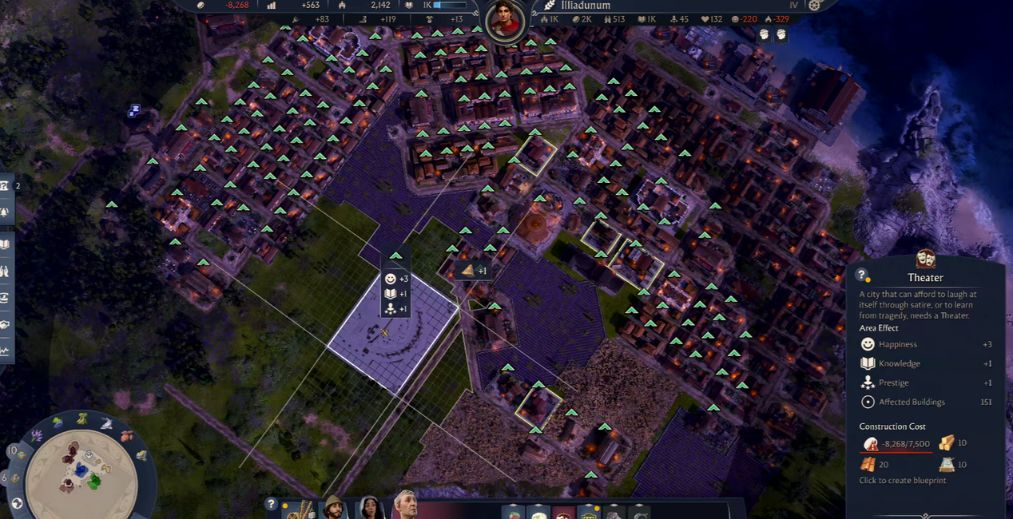
With their modular design, Ubisoft Mainz has built themselves a a runway if the support cycle for Pax Romana, resembles the previous game. “In Anno 1800, everything was kind of finished, so we had to always do something new and attach it to [the finished game]. And for us, it’s now important not only to have this choice [to add more content], but also for the game to be able to grow but also have it stay less overwhelming, for maybe over a year, to keep that level better under control,” Reinher explained.
And this modular design is the key to not just giving players choice in the game, but also giving the developers choice too. Manuel Reinher explained, “For us, it was very important to create this more modular system of development. For example, with the religion that we showed today, or the Discovery Tree, you can imagine that we can also create new discoveries and add them, or create a new religion. Basically, those systems are created to grow as well as the modular ships.”
He continued, “A lot of these systems are now much easier to integrate into the base game. That doesn’t mean that we don’t want to also create new features in the post-launch, absolutely, we do. But we also want to have a choice, and we want to have control over it. We didn’t want to be forced to create new features because we don’t have these modular systems, which would not be able to integrate with the [base game].”
One of Anno 117: Pax Romana’s changes this time is its approach to a robust choice-driven campaign. With two playable protagonists, informed by their different places in society, the choices you make while serving the Roman Emperor (or not to serve him) impact how your game will play out. Diplomatic situations can lead to land wars, support from the Emperor will vary, and we didn’t even get a chance to explore in the preview event. But this ultimately leads to a primary question of why? The answer is that it’s all about new players.
A new addition of a robust campaign helps immersion, but it also helps make new players feel welcome.
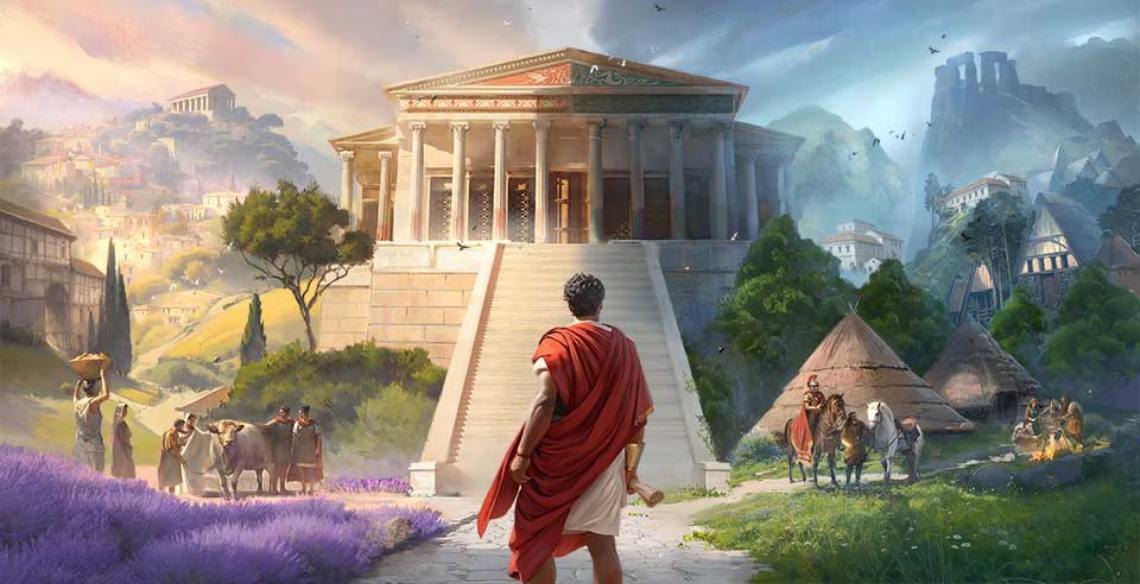
“The sandbox is always our focus. So, let’s say that in Anno 117, the campaign is not the main focus, but it’s quite important for us,” Reinher explained, “There are two main reasons for that. The first one is that a campaign makes it easier for people to engage. So if you’re new to Anno, the campaign generally guides you through the features more smoothly and shows you the gameplay in a more specific order. While in the sandbox, we give you more freedom to engage with those mechanics at your own pace. So, for people who might be completely new to Anno, it’s a nice way to also introduce the game.”
The Creative Director continued, “The second part of that is that it always creates another layer of how you can describe the world, how authentic it is, and how it feels. For us, it’s always another opportunity to tell more about this world in a complete storytelling way.”
Where Anno 117: Pax Romana has taken steps to make this iteration welcoming to new players, it hasn’t last sight of the hardcore builders. And in the next chapter of the Anno franchise, beauty building and min-max optimization are going to be more difficult to tease out from each other. This is due in large art to building buffs, which first saw in 1800’s Tourist Season DLC, but have been made more significant in Anno 117.
Once again, for Manuel Reinher, there are two reasons for blending together the two halves of Anno builders. “First, it was important for us that we offer more options for beauty builders. That’s why we came up with the concept of of these diagonal roads or the night and day cycle, which we had it also in on 1800.”
He continued, “[Second, building buffs] are also about the beauty building, because, previously, in Anno 1800, a lot of the buildings don’t make sense to build in the cities. Now, you can. That creates diversity and that creates more of a living city, because now you can maybe see the bakeries, hat makers, and so on. But we also make sure that if you want to basically play and separate these buildings, that is possible [too].”
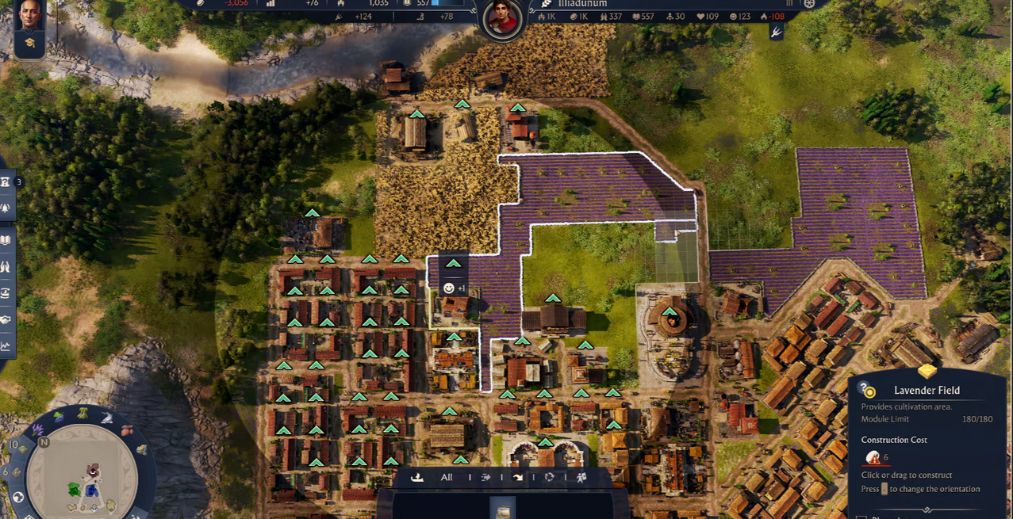
But don’t worry, for those of you inspired by the sewing machine island, you still have that. Reinher continued, “If you want to engage with the typical approach and have everything in one place, and then you want to just build the cities of residences, that’s also possible. We have the [special items] in the game, and they will compensate for that. For example, it’s not necessary to have everything in [building] buffs, like in the city, because then another advantage might be with the items to move your bakeries so that they are close to each other and apply some buff to them in a different way.
During the presentation before our play time, a lot of attention was put on highlighting Anno 117: Pax Romana’s ambitious attempt for even more interactions, which you can see from your residents if you zoom in. From the theater to groups of people walking from the tavern, Anno 117 is gorgeous, both top down, and looking closely at each street. But zooming in on the people you’re building for has been known to bring its own particular set of technical hiccups. When we asked Reinher about Ubisoft Mainz’s approach to this dilemma, he simply said that he calls their engineers “sorcerers.”
Then, he added a bit more context, “The developers are very experienced people. They know their craft, and some have been working on the [Anno] brand for more than 20 years. They know the magic. There are a lot of tools that we use to keep the performance in check. Of course, we optimize the game to show you where you are, and everything on your island stays simulated. Even when you are in different provinces, everything is still calculated, and they’re doing a great job on this. [Performance] is a huge part of our focus now.
Creative Director Manuel Reinher explains the central idea of choice and autonomy in Anno 117: Pax Romana.
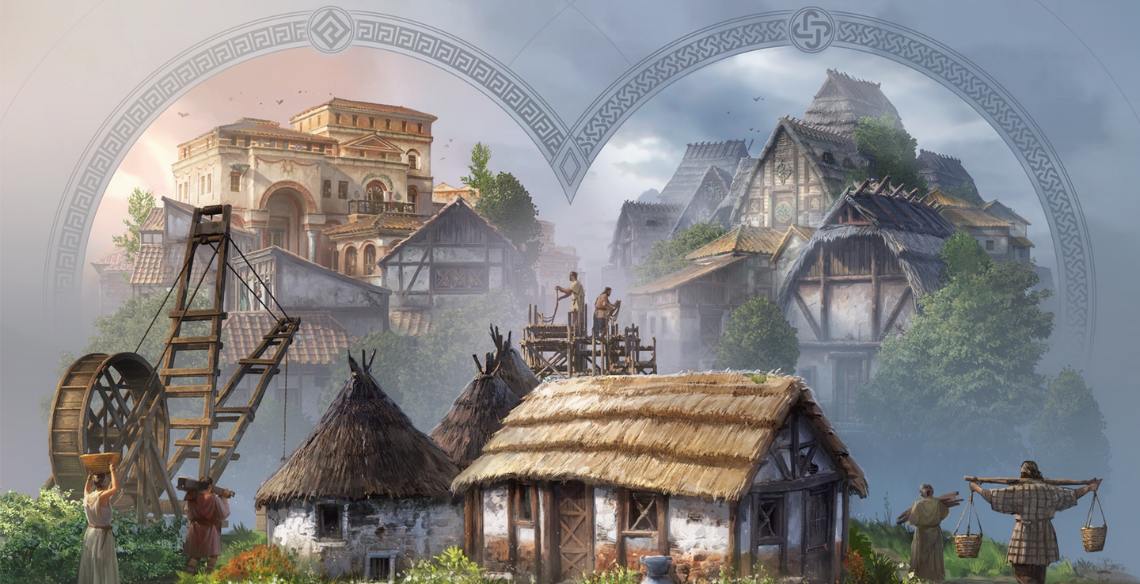
Another standout element for Anno 117 is player choice, and this is more than just when it comes to story beats. River slots can craft clay or flour (similar to Enbesa production), and mountains can be equipped with any mine (that you have fertility for) or aqueducts. Another element of the modular design, player agency, is going to be huge when deciding on their island development.
When it comes to modular resources, Manuel Reinher said that they wanted to make these resources more optional. That’s where the aqueducts come in. “We wanted to have this kind of interesting balance, where you need to compromise between this mining and having more aqueducts, because the bigger and bigger city you build, you will maybe need more and more water, especially if you advance in the Discovery Tree.”
He continued, “For us, it was also important to have flexibility to define the specific loads on the island or what kind of light, but we don’t say it’s just like this one place anymore. Because maybe that one particular place would be the best place for you to do the aqueducts, and then you need to compromise what kind of load you sacrifice, which might lead to some unpleasant events just because of how you build your city and where you put it. We wanted to eliminate this frustration and give autonomy to players.”
We’ve talked about an expanded narrative, how the team is building for the future, and the focus on welcoming new players. But there is one key factor that players have been wanting to know more about, and that’s land combat. Anno 117: Pax Romana has quite a few firsts, but it also marks the return of land combat as well. When asked about what the inspiration was for bringing it back, the answer was pretty straightforward. History.
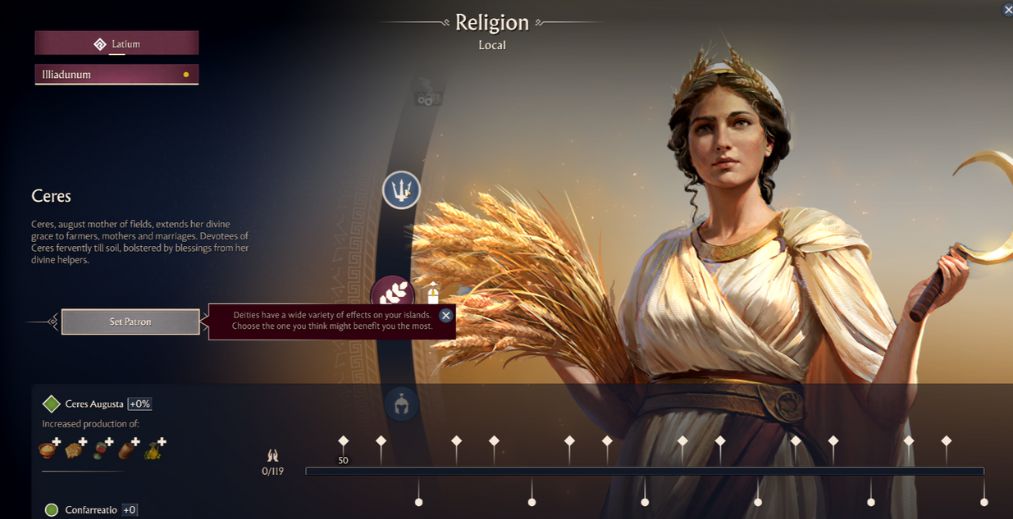
“In Anno 1800, you were also already discussing the land combat a lot, but in the end, we decided not to do that. I would say, 1800, the difference was mainly because in the 19th century, they didn’t build the fortifications that much around the cities, and this would be less or necessary part to implement,” Reinher said, “But when we decided on Rome, this was very number one idea and how people identify with Rome. So it was always clear that we had to do land combat, and if we didn’t, we would have leave Rome and do a different city.”
He continued, “For example, here is a specific thing about ships. In Anno 1800, [in that time period], they built very specific designs of ships for different purposes. You’d have the clippers, which were very long ships traveling with a lot of tea from India to Britannia. You have smaller ships that had different purposes. But in ancient times, that was not the case.”
“[Ships in Ancient Rome] was more about building one basic hull of the ship, and then more equipment would be added for what they needed. We actually found this quite interesting because we could not feature a wealth of ships like in Anno 1800. We couldn’t say that this is a ship of the line, or this is a clipper, or this is a frigate. That’s just not possible here,” he added.
“In [Ancient Rome], it was more or less, just the same shape, and maybe a little bit longer, and they’d attach what they needed. So you can attach two masts, so it was a bit faster, and sometimes they didn’t have masts at all, and it was just rowers, or they just would put an archer tower on top of it. This is how they would build the ships, and it also brings possibilities and interesting choices for the players, and it’s actually very true to the history.”
The Discovery Tree is here to help players feel more connected to what they unlock.
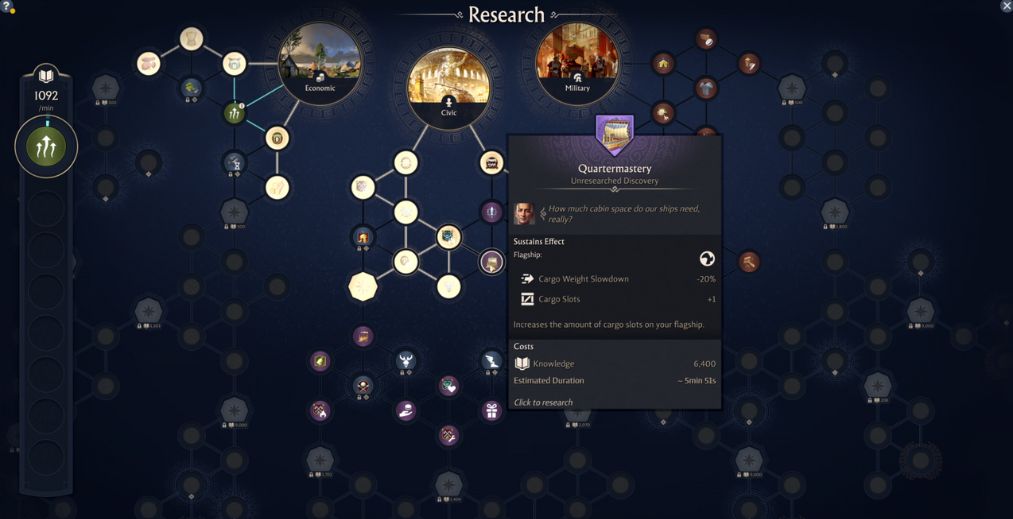
Another huge addition coming in Anno 117: Pax Romana is a robust Discovery Tree system. While this brings the game in line with some strategy genre classics, it is new to Anno, a builder game. However, it also does pose as a balance between simply getting larger population sizes at each tier to unlock new buildings, and instead, pushes you hit other requirements to move your city forward. Here, again, all roads leed to player autonomy and choice.
On the Discovery Tree, Manuel Reinher explained two reasons for the addition. “The two main reasons to have the discoveries were that first, we wanted to do the choices. That was a little bit like a no-brainer, because whether you have the discovery or tech tree or something like this, especially with the amount of content we have in Anno, in general, it works. [The Discovery Tree] was quite a good choice, so that you can actually progress. If you’re not into the military, you can focus on something else or vice versa.
He continued, “The second reason is also maybe even more important. Anno in general features a lot of content. People like to play it because it’s huge. The problem we had with Anno 1800 was that sometimes we were not able to promote the content in the best way for players to use.
“My issue is that we didn’t tell you that you have a repair crane. You might not know unless you go into the construction menu, go to tier two, click on the shipyard, and then, oh, there is a new icon. That was a problem [in Anno 1800]. To have it in the Discovery Tree so that you can go over it and actually make it more a part of your achievements that you can celebrate. On the one hand, I believe that we are really great when it comes to the content size, but the promotion was a bit of a problem.”
As a whole Anno 117: Pax Romana feels like the perfect iteration on the very best part of Anno 1800‘s post-launch content. Still, it feels fresh, new, and ultimately with the developers and players being able to choose their future, it’s hard not to say that its bright for both new fans and old.
Anno 117: Pax Romana is set to release in Winter 2025 with cross-play and cross-progression on PlayStation®5, Xbox Series X | S, Amazon Luna as well as Windows PC through Steam, the Epic Games Store, and Ubisoft Connect.
Anno 117: Romana Is Putting Its Focus On Player Choice | Hands-On Preview
We got the chance to go hands-on with Ubisoft Mainz’s Anno 117: Pax Romana. Here’s what we thought. After more than 25 years of the Anno franchise, Ubisoft Mainz is heading to Italy. In the upcoming latest installment of the franchise, Anno 117: Pax Romana, players will have the chance to build their very own Roman Empire.

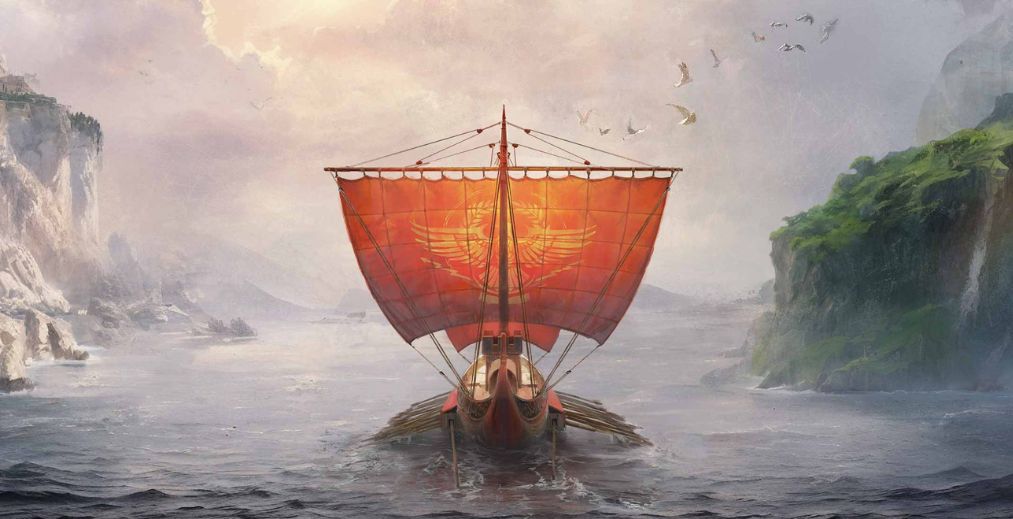




![[EXCLUSIVE] ‘Invincible VS’ Devs Dive Deep Into Their New Original Character: Ella Mental Ella Mental in Invincible VS](https://butwhytho.net/wp-content/uploads/2025/12/Invincible-VS-Ella-Mental-But-Why-Tho-1-450x247.jpg)
![[EXCLUSIVE] Palia Devs Dive Into Winterlights, New Tints, Lunar Paths, And More From Upcoming Patch Palia Winterlights Patch](https://butwhytho.net/wp-content/uploads/2025/12/Palia-Winterlights-But-Why-Tho-450x247.jpg)